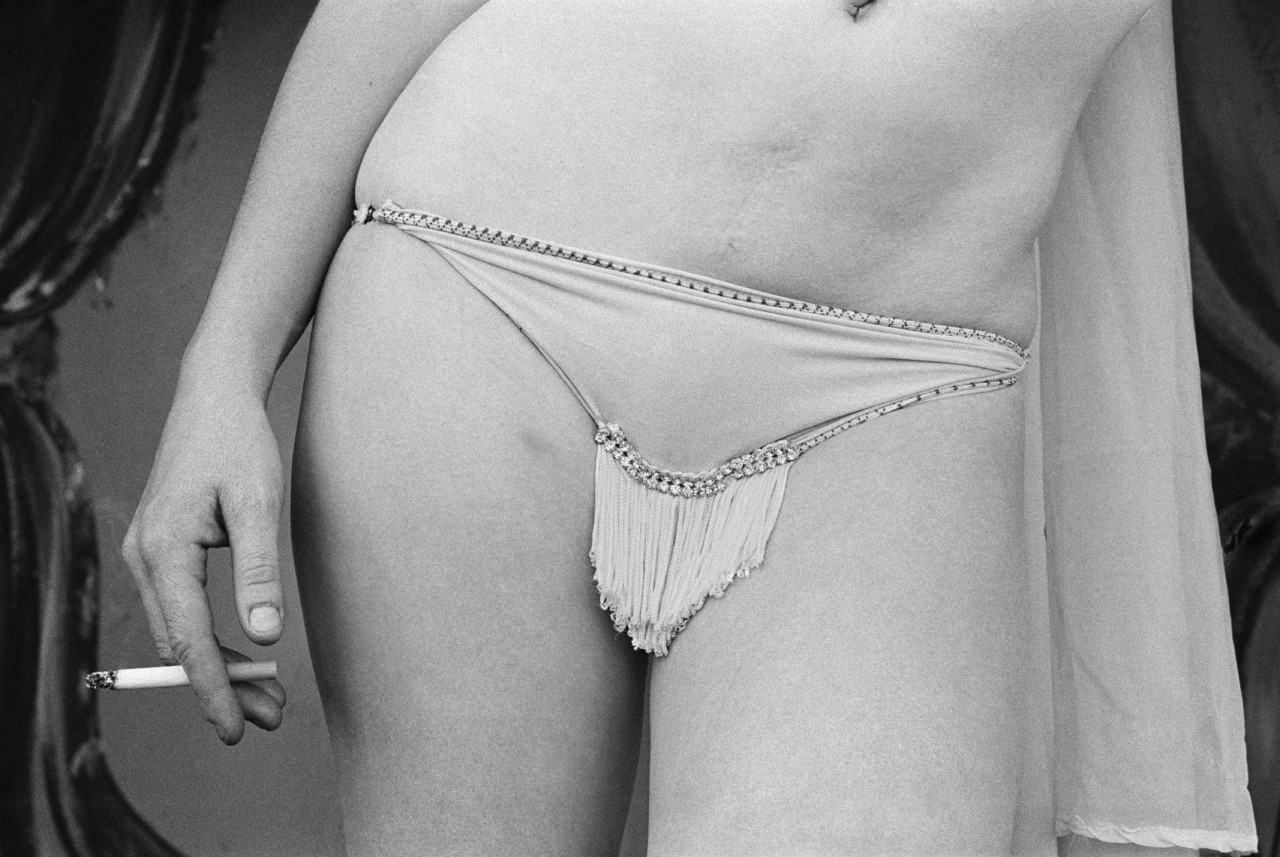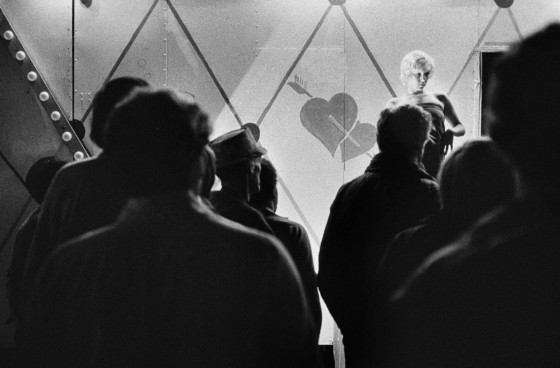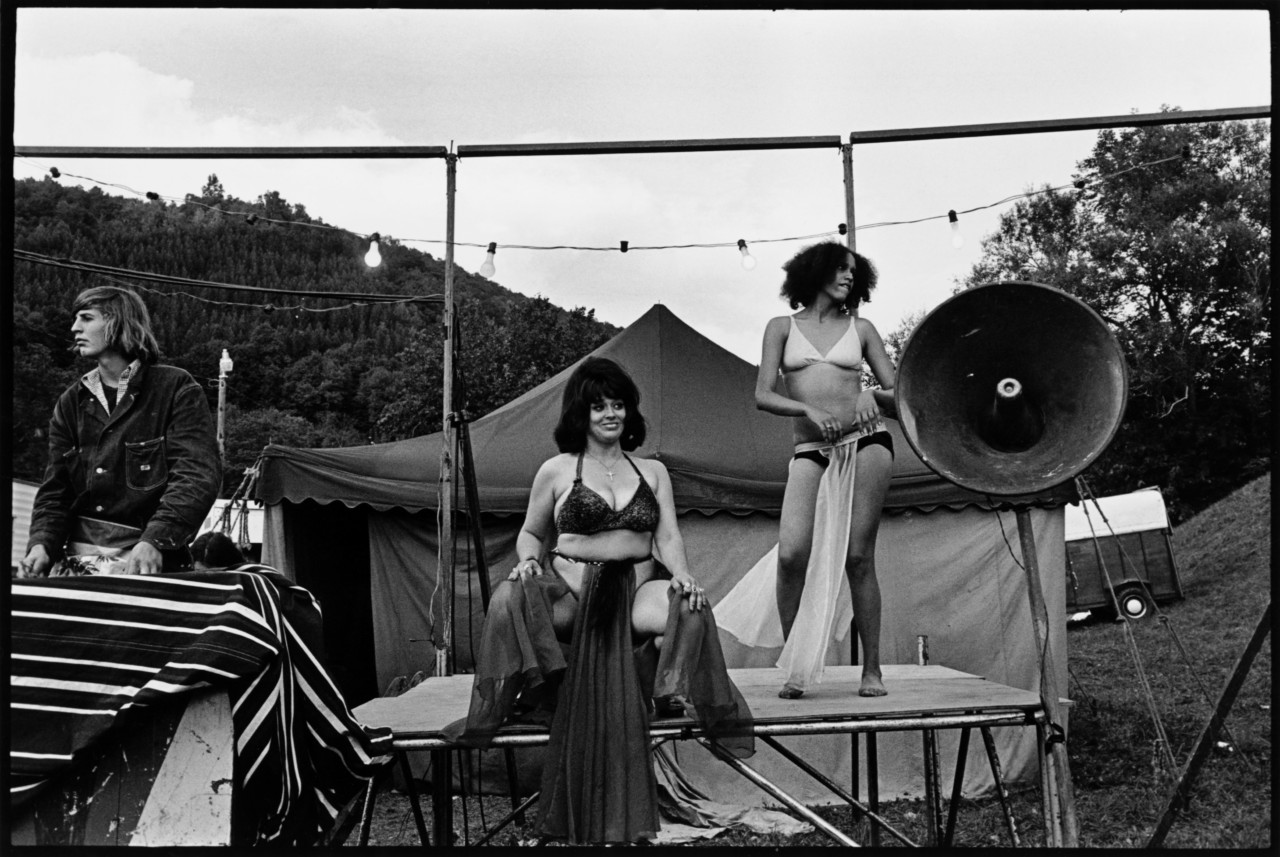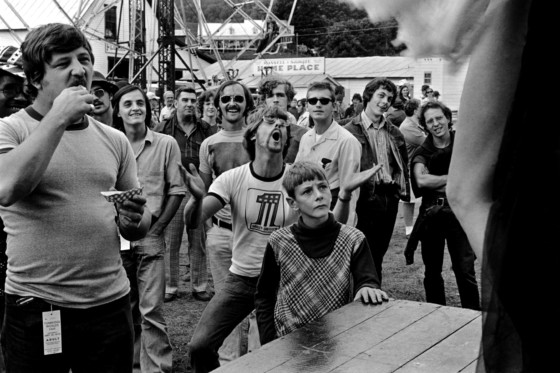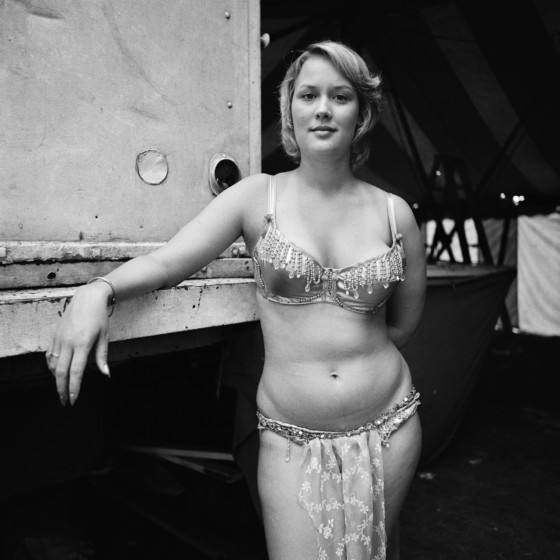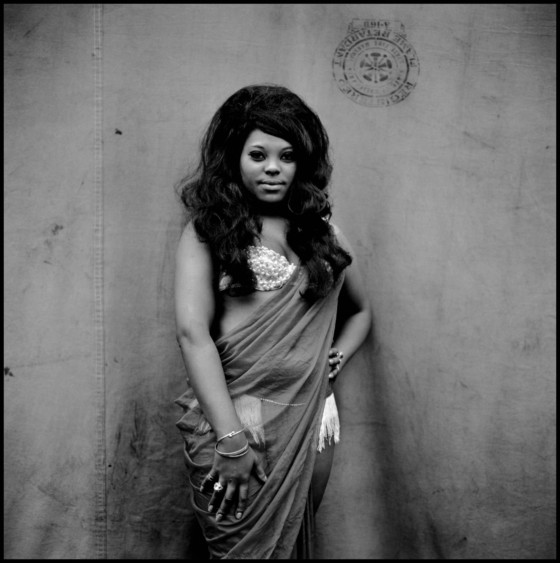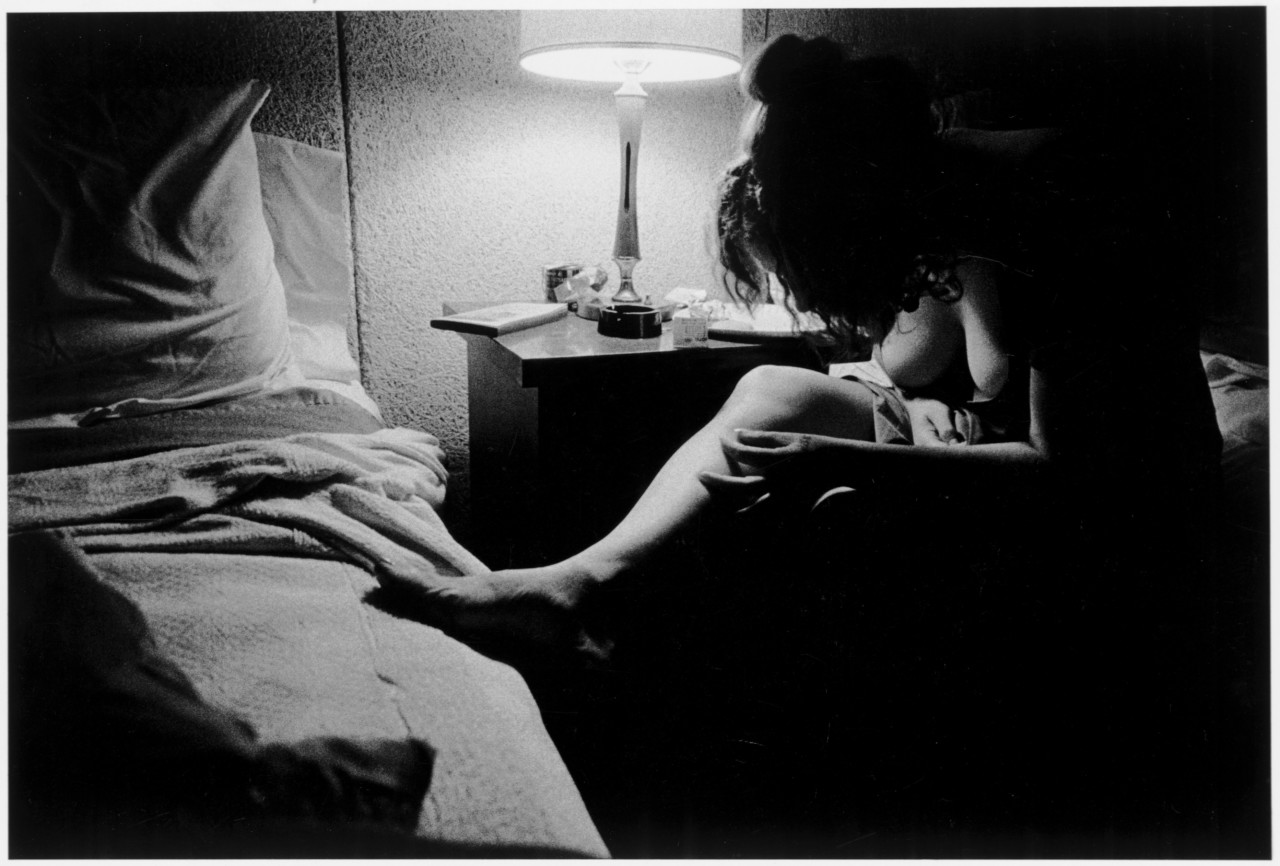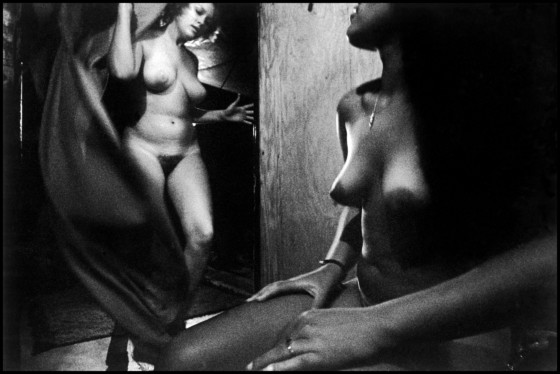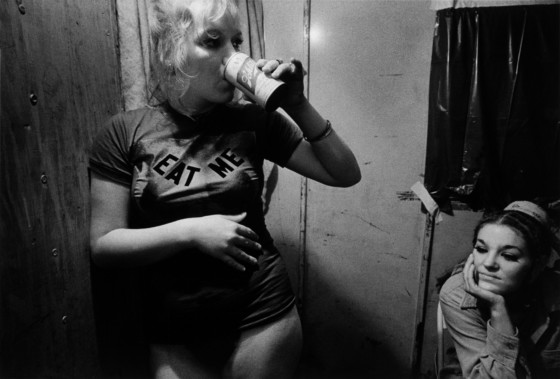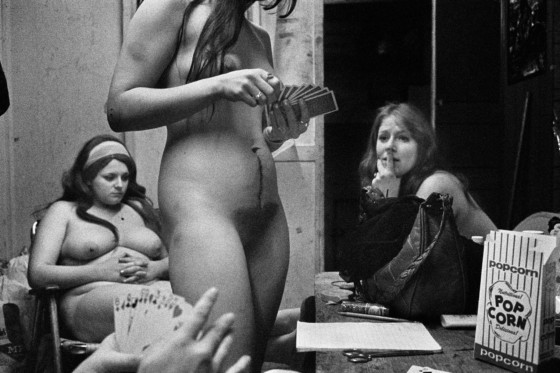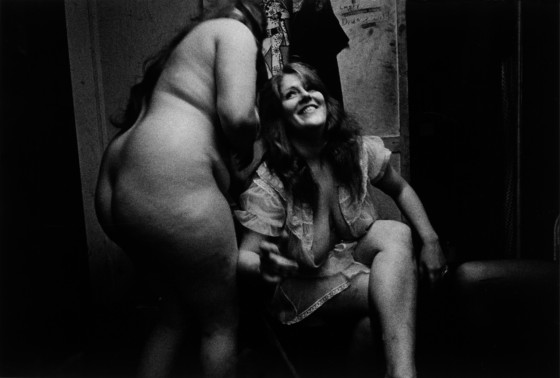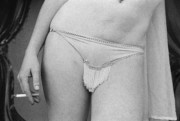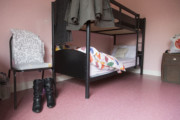Carnival Strippers
Susan Meiselas’s seminal work presents a nuanced view on the dynamics of America’s traveling ‘girl shows’ in the early 1970s
From 1972 to 1975, Susan Meiselas spent her summers photographing and interviewing women who performed striptease for small town carnivals in New England, Pennsylvania, and South Carolina. As she followed carnivals from town to town, she portrayed the dancers on stage and off, photographing their public performances as well as their private lives. She also taped interviews with the dancers, their boyfriends, the show managers, and paying customers.
At the first exhibition of the work, and later in the book Carnival Strippers, Meiselas included the voices of the people she photographed, presenting their words alongside portraits and documentary shots of them. “The women brought me in, and the book later brought a hidden world to public attention, sharing a complex story from the inside out,” Meiselas writes in her new book, On The Frontline.
"From the garbage collector to the President, that’s the way it is"
-
Her subjects offered a variety of perspectives on sex within the context of poverty, class and society at large. Through the words spoken by her subjects and the expressions captured in her photos, Meiselas narrates a derogatory attitude patrons had toward the women in the show, and, in fact, women on the whole. Some of the quotes Meiselas included in her published book, overheard from men in the show’s audiences, reveal sexist attitudes: “Agreeing with you, living with you, taking care of your clothes – that’s what a woman’s for,” says one man.
"They’re actually giving of themselves, they’re sharing, and they’re making people happy"
-
Certain quotes serve as an apt reminder that some things haven’t changed much since the early 1970s. In a conversation about touching women without their consent, one male audience member is quoted as saying: “A guy touches it before you, then another guy’s touching it, then another guy, then it’s your turn…From the garbage collector to the President, that’s the way it is – it’s not what you do, it’s what you get caught doing.”
“With a few exceptions, the ones that do touch you have to hurt you in some way,” says Lena, a stripper. “They think of carnival people as low anyway, and a carnival stripper they think is lower.”
The male perspective explored by Meiselas is multi-dimensional, presenting a patchwork of views other than a stereotypical macho position. There are some for whom the show is just background noise: “The girl shows don’t mean that much. When you come to Tunbridge it’s to meet your old friends from other years. Most of the action is in the parking lots,” said one customer, who had been attending fairs since 1958.
Another man’s view is remarkably sensitive. He says: “These girls that allow you to have contact with them, in a way I look up to them, they’re not selfish. I think it’s hard to do what they do. They’re actually giving of themselves, they’re sharing, and they’re making people happy. They make me happy, anyway. That’s about the most intimate thing you can do with a woman.”
"I just don’t like the thought that everybody thinks that I would lay down for anything or anybody"
-
The testimony from the ‘carnival strippers’ themselves portrays myriad views, but the vast majority of the women say they are motivated to work in the shows because of the independence it gives them. “If you want to be your own woman, to be a single person, you can’t do a hell of a lot better than that,” says Patty, a manager and former stripper.
One stripper, Debbie, articulates the complex relationship between class and a woman’s independence. She says: “To me, there’s rich people, right, rich and high and sophisticated, and then there are these people who have to worry and have to fight for what they want…You gotta eat. When you eat and get your own money, that makes you your own woman. You don’t ask nobody for nothing.”
"The women brought me in, and the book later brought a hidden world to public attention, sharing a complex story from the inside out"
- Susan Meiselas
A lack of access to an independant income appears to have led many of the carnival’s strippers into the job. Shortie, who blames her alcohol problem on the work, says, “This isn’t what I want to do. This is not my life. This isn’t really what pleases me. It’s just something to get my start.” And the women’s convention-breaking jobs do not necessarily represent more radical views on sex, gender and relationships: “I figure a woman’s place is in a house,” says Cindy, a stripper, “but I ain’t got no house to go to.”
Some of the women struggle with the negative way in which society views them because of their work– “I just don’t like the thought that everybody thinks that I would lay down for anything or anybody,” says Coffee, a stripper. For others, the challenge is the job itself, opting to mentally disengage from what their body is doing as psychological self-preservation: “It’s a protection for myself. You put a wall up between you and what’s really going on,” says Lena. And others find fun and enjoyment in their work – “I think that’s what I like about it – all the attention, everybody looking at me. It’s a fabulous feeling,” says Lisa.
"The men depend on you to entertain them or to bring in money for them"
- Lena
A study of the role of women in society in the 1970s through the microcosm of the dying traveling ‘girl show’ industry, Meiselas’s Carnival Strippers brings to the fore differing views on women, sex, society, and class, exploring the sometimes hard-to-define line between independence and exploitation. “Being a stripper is as close to being in a man’s world as you can be,” says Lena. “It’s a tough life. You need strength and character. The men depend on you – to entertain them and to bring in money for them.
And when they come in, it’s up to the girl. She’s got forty guys in there. They could tear her limb from limb. She’s got to control them, keep them back, and all she has is her wits and talents. The men can’t see it for what it is. The women look at it as being revolutionary – for the first time in their lives to say, ‘I’ve got you eating out of the palm of my hand.'”
A retrospective of Meiselas’s career opens at the Jeu de Paume in Paris in February 2018. The show includes audio of Meiselas’s original recordings made during this project. Some of that audio is presented in this video.


